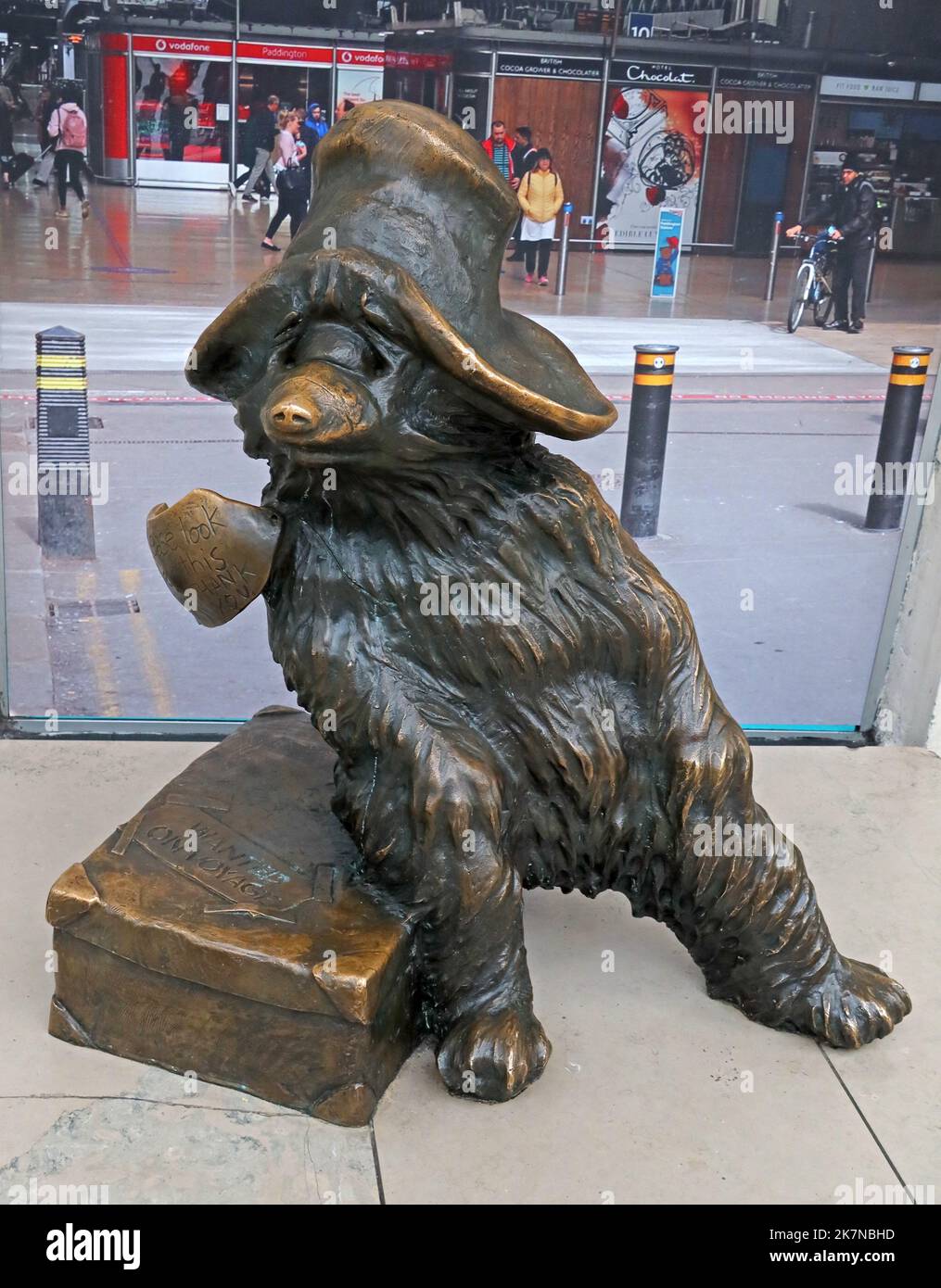The famous Paddington Bear statue, at Paddington mainline railway Station, Bayswater, London, England, UK

Image details
Contributor:
Tony Smith / Alamy Stock PhotoImage ID:
2K7NBHDFile size:
48.8 MB (1.9 MB Compressed download)Releases:
Model - no | Property - noDo I need a release?Dimensions:
3648 x 4672 px | 30.9 x 39.6 cm | 12.2 x 15.6 inches | 300dpiDate taken:
9 October 2022Location:
Paddington mainline railway Station, Bayswater, London, England, UKMore information:
The statue of Paddington Bear at London Paddington station is a bronze sculpture by Marcus Cornish. Erected in 2000, it marks the association between Michael Bond's fictional bear and the station from which his name derives. The author Michael Bond introduced Paddington Bear to the world in 1958. Inspired by his purchase of a teddy bear as a Christmas present for his wife, and naming the bear Paddington as the couple lived near Paddington Station, Bond imagined the arrival of a real bear at the station in his first novel, A Bear Called Paddington. Paddington travels to London from Lima, Peru, stowed away in the life boat of a transatlantic vessel, equipped only with a small suitcase, some marmalade sandwiches and a note attached to his coat which reads, "Please look after this bear. Thank you". Adopted by the Brown family, he undergoes a series of adventures, published in fourteen volumes between 1958 and 2018. The last in the series, Paddington's Finest Hour, was published posthumously, following Bond's death at the age of 91 on 27 June 2017 The sculpture was created by Marcus Cornish in 2000. Cast in bronze, the statue stands on Platform 1 under the station clock and was unveiled by Michael Bond on 24 February 2000. Its present location is its second within the station, it having been moved from its original position at the foot of the escalators due to renovation work. Bond's obituary in The Guardian described the statue as "one of the few memorials in London to inspire real affection